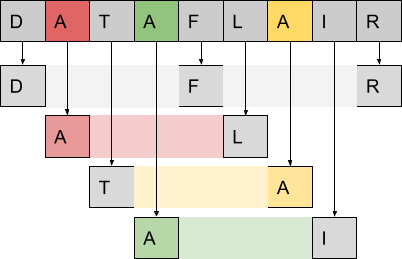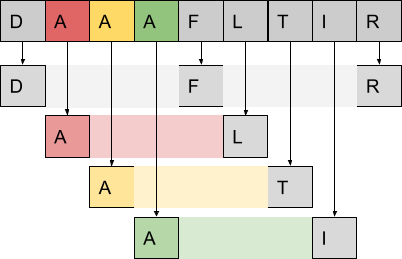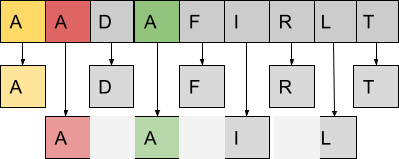Shell Sort in Data Structure
Free Data Structures and Algorithms courses with real-time projects Start Now!!
Shell sort is one of the highly efficient algorithms. It is based on the insertion sort technique. The major difference between insertion sort and shell sort is that shell sort avoids large shifts of the elements. Shell sort first sorts the elements that are far and continuously keeps on decreasing the interval between the far elements.
The space between the far elements is called interval. Interval for the shell sort is calculated by various methods.
Interval calculation in Shell Sort
Interval in shell sort can be reduced by using the optimal sequence. Some optimal sequences that can be used in shell sort are:
- Shell’s original sequence: N/2, N/4, …. 1
- Knuth’s Sequence: 1, 4, 13, ….., (3n – 1) / 2
- Sedgwick’s sequence: 1,8,23,77,281,1073,4193,16577… 4j+1+3.2j+1
- Hibbard’s sequence: 1,3,7,15,31,63,127,255,511….
- Papernov & Stasevich sequence: 1,3,5,9,17,33,65,….
- Pratt: 1,2,3,4,6,9,8,12,18,27,16,24,36,54,81,…
Shell Sort Procedure
1. Sort the columns by using insertion sort after arranging the elements in the tabular form
2. Repeat Step 1 with a smaller number of longer columns each time. Do this in such a way that at the end, only one column of data is left to be sorted.
Shell Sort Algorithm Steps
1: set flag = 1, interval = n
2: while flag = 1 or interval > 1
3: set flag = 0
4: set interval = (interval + 1) / 2
5: for i = 0 to i < (n – interval)
6: if array[i + interval] > array[i]
swap array[i + interval], array[i]
set flag = 0
[End of for]
[End of while]
7: Stop
Pseudocode for Shell Sort
procedure Shellsort(array)
while interval < array.length /3 do:
interval = interval * 3 + 1
end while
while interval > 0
for out = interval; out < array.length; out ++
insertValue = array[out]
inner = out;
while inner > interval -1 && array[inner - interval] >= insertValue
array[inner] = array[inner - interval]
inner = inner - interval
end while
array[inner] = insertValue
end for
interval = (interval -1) /3;
end while
end procedureWorking of shell sort
Let’s sort the characters in the word “DATAFLAIR” by the bubble sort technique.
We will be using knuth’s sequence for interval:
Interval = integer (N/2) = integer (9/2) = 4
Iteration 1: Divide the array into subarray containing no. of elements = interval
Iteration 2: swap the elements with their corresponding elements as shown above
Iteration 3: update interval value to 1
Iteration 4: swap the elements with their corresponding elements as shown above
Iteration 5: sort the remaining array using insertion sort
Final sorted array:
We can clearly see that the order of elements with the same value ‘A’ is changed in the final sorted array in the above example. Therefore, shell sort is not a stable algorithm.
Shell Sort Implementation in C
#include <stdio.h>
void ShellSort(int array[], int len)
{
for (int interval = len / 2; interval > 0; interval = interval/2)
{
for (int i = interval; i < len; i =i+ 1)
{
int temp = array[i];
int j;
for (j = i; j >= interval && array[j - interval] > temp; j -= interval)
{
array[j] = array[j - interval];
}
array[j] = temp;
}
}
}
int main()
{
int array[] = {21, 3, 49, 82, 91, 36, 61, 77,53};
int len = sizeof(array) / sizeof(array[0]);
ShellSort(array, len);
printf("Sorted array: \n");
for (int i = 0; i < len; ++i)
{
printf("%d ", array[i]);
}
}
Implementation of Shell Sort in C++
#include<iostream>
using namespace std;
void ShellSort(int array[], int len)
{
for (int interval = len / 2; interval > 0; interval = interval/2)
{
for (int i = interval; i < len; i =i+ 1)
{
int temp = array[i];
int j;
for (j = i; j >= interval && array[j - interval] > temp; j -= interval)
{
array[j] = array[j - interval];
}
array[j] = temp;
}
}
}
int main()
{
int array[] = {21, 3, 49, 82, 91, 36, 61, 77,53};
int len = sizeof(array) / sizeof(array[0]);
ShellSort(array, len);
cout << "Sorted array:" ;
for (int i = 0; i < len; ++i)
{
cout << " " << array[i];
}
}
Shell Sort Implementation in JAVA
import java.util.Arrays;
public class ShellSort
{
void shellSort(int array[], int len)
{
for (int interval = len / 2; interval > 0; interval = interval / 2)
{
for (int i = interval; i < len; i = i+ 1)
{
int temp = array[i];
int j;
for (j = i; j >= interval && array[j - interval] > temp; j = j- interval)
{
array[j] = array[j - interval];
}
array[j] = temp;
}
}
System.out.println("Sorted Array: ");
for (int i=0;i<len;i++)
System.out.print(array[i]+" ");
}
public static void main(String args[])
{
int[] array = { 21, 3, 49, 82, 91, 36, 61, 77,53 };
int len = array.length;
ShellSort ss = new ShellSort();
ss.shellSort(array, len);
}
}Implementation of Shell Sort in Python
def shellSort(array, n):
interval = n // 2
while interval > 0:
for i in range(interval, n):
temp = array[i]
k = i
while k >= interval and array[k - interval] > temp:
array[k] = array[k - interval]
k = k - interval
array[k] = temp
interval =interval // 2
array = [21, 3, 49, 82, 91, 36, 61, 77,53]
size = len(array)
shellSort(array, size)
print('Sorted Array:')
print(array)
Complexity of Shell Sort
| scenario | complexity | |
| Time Complexity | Average case | O(n log n) |
| Best case | O(n log n) | |
| Worst case | O(n2) | |
| Space complexity | O(1) |
Applications of shell sort
Shell sort is used:
- To call a stack user head
- When recursion exceeds the limit
- Shell sort reduces the space between elements having close value. More beneficial than insertion sort.
Conclusion
Shell sort is one the most efficient sorting algorithm for large datasets. This technique is based on insertion sort but it reduces the no. of swaps considerably. Shell sort does not require extra memory which makes it an overall efficient algorithm for sorting. In the working of shell sort, we proved that shell sort is not a stable sorting algorithm.
Did you like this article? If Yes, please give DataFlair 5 Stars on Google







